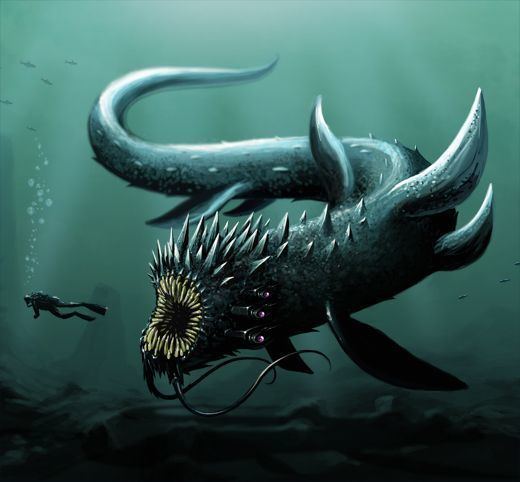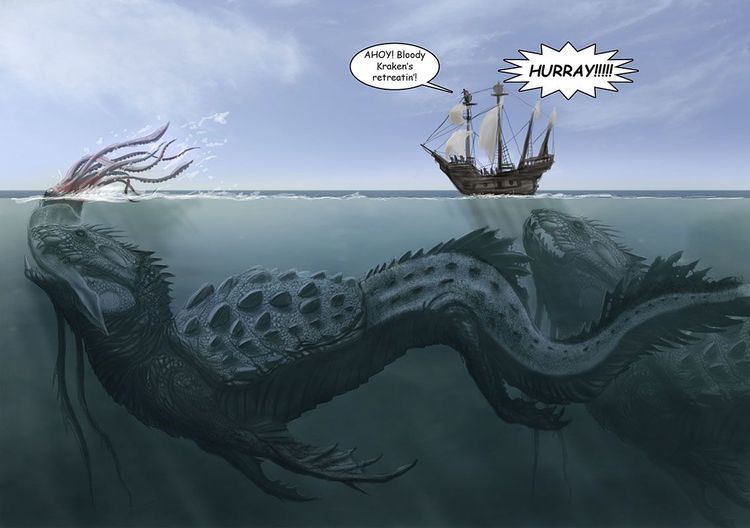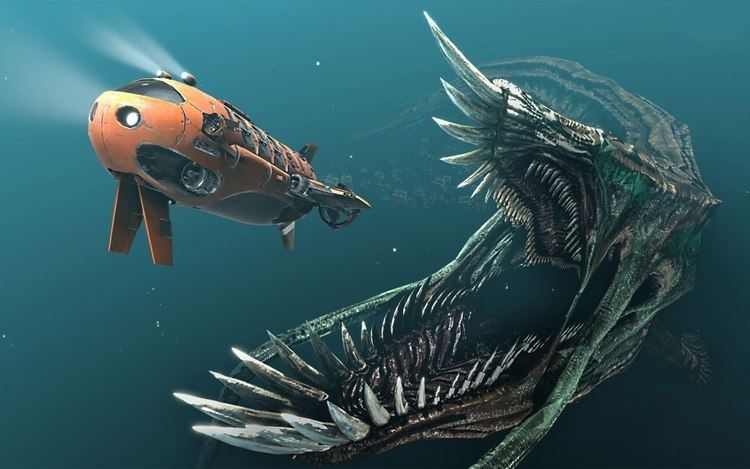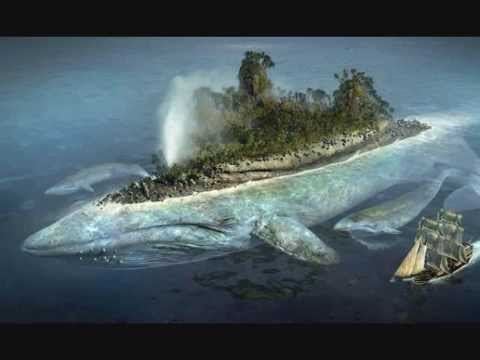 | ||
Similar Hafgufa, Chessie (sea monster), Iku Turso | ||
Sea monsters are beings from folklore believed to dwell in the sea and often imagined to be of immense size. Marine monsters can take many forms, including sea dragons, sea serpents, or multi-armed beasts. They can be slimy and scaly and are often pictured threatening ships or spouting jets of water. The definition of a "monster" is subjective, and some sea monsters may have been based on scientifically accepted creatures such as whales and types of giant and colossal squid.
Contents
- 7 mysterious prehistoric sea monsters
- Sightings and legends
- Alleged sea monster carcasses
- Examples
- Historically reported sea monsters
- Currently reported specific sea monsters
- In fiction
- References

7 mysterious prehistoric sea monsters
Sightings and legends

Historically, decorative drawings of heraldic dolphins and sea monsters were frequently used to illustrate maps, such as the Carta marina. This practice died away with the advent of modern cartography. Nevertheless, stories of sea monsters and eyewitness accounts which claim to have seen these beasts persist to this day.

Sea monster accounts are found in virtually all cultures that have contact with the sea. For example, Avienus relates of Carthaginian explorer Himilco's voyage "...there monsters of the deep, and beasts swim amid the slow and sluggishly crawling ships." (lines 117-29 of Ora Maritima). Sir Humphrey Gilbert claimed to have encountered a lion-like monster with "glaring eyes" on his return voyage after formally claiming St. John's, Newfoundland (1583) for England. Another account of an encounter with a sea monster comes from July 1734. Hans Egede, a Dano-Norwegian missionary, reported that on a voyage to Gothaab/Nuuk on the western coast of Greenland he observed:

a most terrible creature, resembling nothing they saw before. The monster lifted its head so high that it seemed to be higher than the crow's nest on the mainmast. The head was small and the body short and wrinkled. The unknown creature was using giant fins which propelled it through the water. Later the sailors saw its tail as well. The monster was longer than our whole ship.
Other reports are known from the Pacific, Indian and Southern Oceans (e.g. see Heuvelmans 1968).
There is a Tlingit legend about a sea monster named Gunakadeit (Goo-na'-ka-date) who brought prosperity and good luck to a village in crisis, people starving in the home they made for themselves on the southeastern coast of Alaska.
Ellis (1999) suggested the Egede monster might have been a giant squid. Other hypotheses are that modern-day monsters are surviving specimens of giant marine reptiles, such as an ichthyosaur or plesiosaur, from the Jurassic and Cretaceous Periods, or extinct whales like Basilosaurus. Ship damage from Tropical cyclones such as hurricanes or typhoons may also be another possible origin of sea monsters.
In 1892, Anthonie Cornelis Oudemans, then director of the Royal Zoological Gardens at The Hague saw the publication of his The Great Sea Serpent, which suggested that many sea serpent reports were best accounted for as a previously unknown giant, long-necked pinniped.
It is likely that many other reports of sea monsters are misinterpreted sightings of shark and whale carcasses (see below), floating kelp, logs or other flotsam such as abandoned rafts, canoes and fishing nets.
Alleged sea monster carcasses
Sea monster corpses have been reported since recent antiquity (Heuvelmans 1968). Unidentified carcasses are often called globsters. The alleged plesiosaur netted by the Japanese trawler Zuiyō Maru off New Zealand caused a sensation in 1977 and was immortalized on a Brazilian postage stamp before it was suggested by the FBI to be the decomposing carcass of a basking shark. Likewise, DNA testing confirmed that an alleged sea monster washed up on, Newfoundland in August 2001, was a sperm whale.
Another modern example of a "sea monster" was the strange creature washed up in Los Muermos on the Chilean sea shore in July 2003. It was first described as a "mammoth jellyfish as long as a bus" but was later determined to be another corpse of a sperm whale. Cases of boneless, amorphic globsters are sometimes believed to be gigantic octopuses, but it has now been determined that sperm whales dying at sea decompose in such a way that the blubber detaches from the body, forming featureless whitish masses that sometimes exhibit a hairy texture due to exposed strands of collagen fibers. The analysis of the Zuiyō Maru carcass revealed a comparable phenomenon in decomposing basking shark carcasses, which lose most of the lower head area and the dorsal and caudal fins first, making them resemble a plesiosaur.
Examples
Historically reported sea monsters
Sea monsters actually reported first or second hand include
